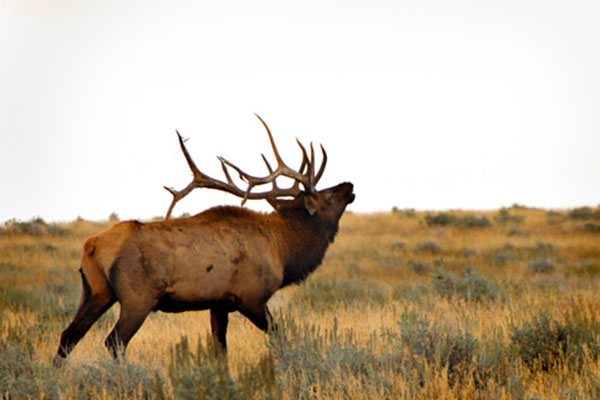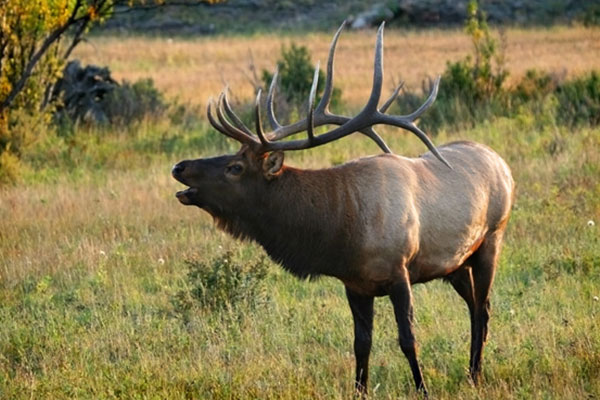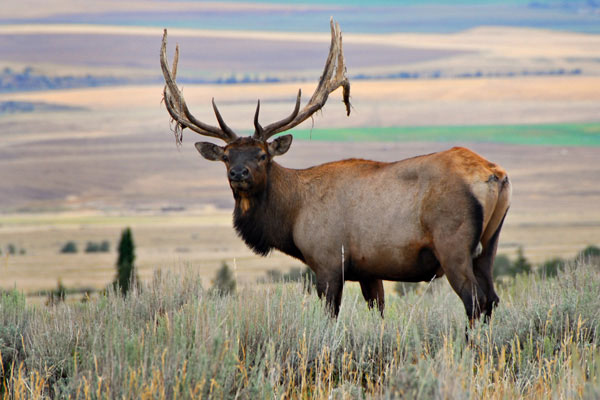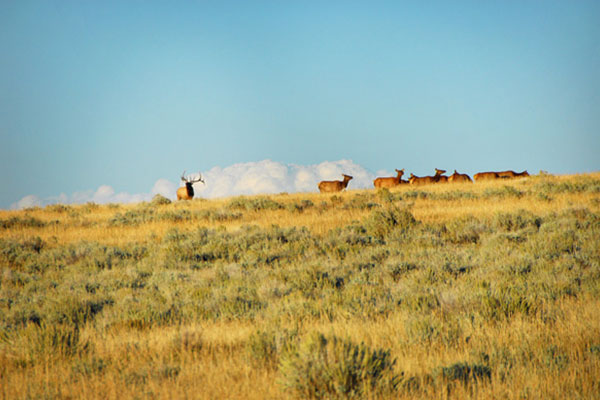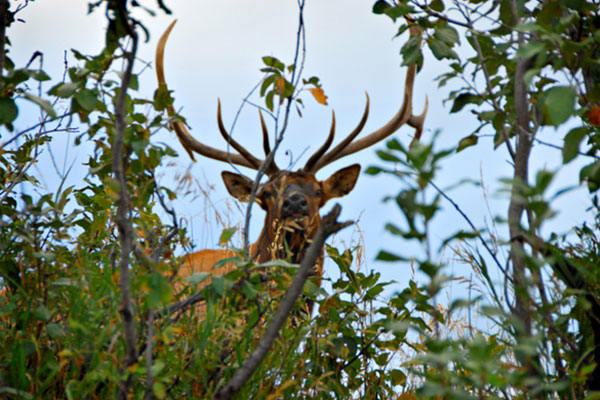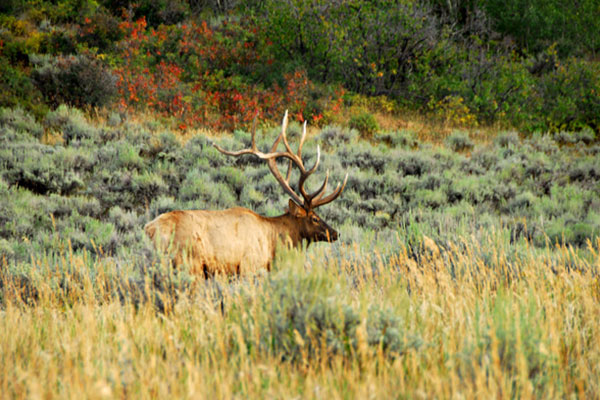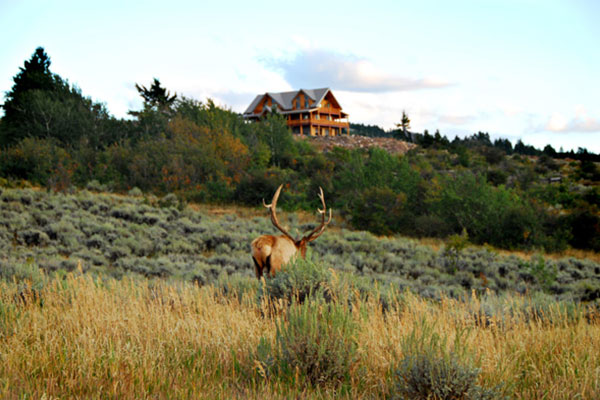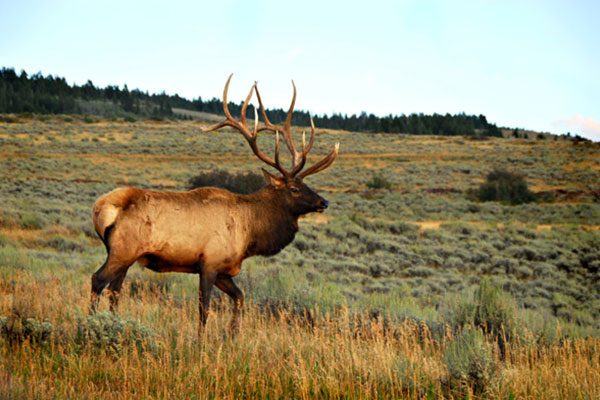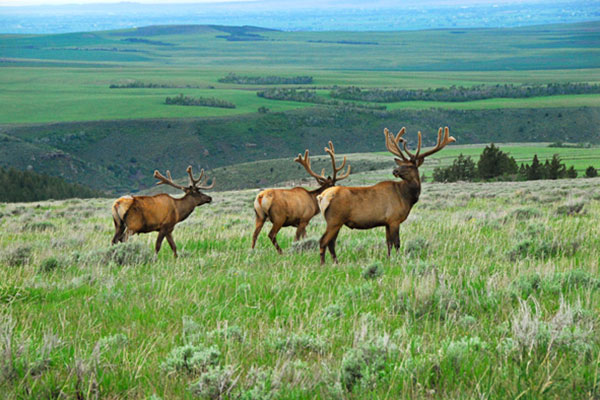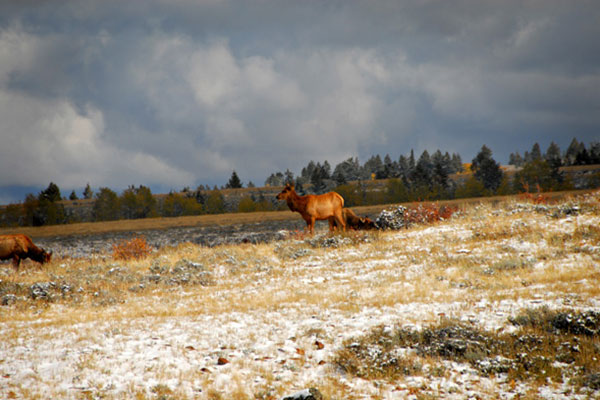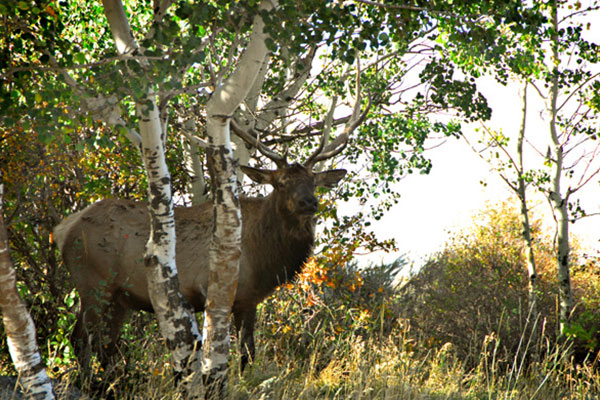The Elk
North American Elk are split into six subspecies:
- Rocky Mountain – largest antlers of all subspecies (This is the elk we have).
- Roosevelt’s (Coastal Pacific Northwest) – largest in body size of all subspecies, but not antler size.
- Tule (Central California) – smallest body size of all subspecies.
- Manitoban (northern Great Plains).
- Merriam’s (Southwest and Mexico) – Extinct.
- Eastern (east of the Mississippi) – Extinct.
Elk are also called wapiti, a Native American word that means “light-colored deer.” Elk are related to deer but are much larger than most of their relatives.
Birth Cycle
- Calves are typically born in late May through early June.
- Calves are born spotted and scentless as camouflage from predators. They can stand within 20 minutes of birth. They spend their first few weeks hiding motionless while their mothers feed.
Diet
- Summer: grasses and forbs
- Spring and Fall: grasses
- Winter: grasses, shrubs, tree bark and twigs
Elk may supplement their diet at licks, where they take in minerals that help them grow healthy coats and produce nutritious milk. An elk’s stomach has four chambers: the first stores food, and the other three digest it.
Ivories
An elk’s top two canine teeth are ivory. Scientists believe the ivories are remnants of saber-like tusks that ancestral species of elk used in combat.
Most hunters save ivories as a memento of the hunt and many make jewelry out of them.
Antlers
Only male elk have antlers. Bulls shed and grow a new set of antlers every year. New antlers are covered in fuzzy skin called velvet. The antlers harden from the inside out, and by late summer the velvet peels away, revealing the hardened bone. By September, antlers are solid bone. A set of antlers on a mature bull can weigh up to 40 pounds.
Elk Talk: Vocalizations
- Elk are among the noisiest ungulates, communicating danger quickly and identifying each other by sound.
- High-pitched squeal: Newborn to its mother, who recognizes her calf by its voice.
- Bark: Warning of danger.
- Chirps, mews and miscellaneous squeals: General conversation among the group.
- Bugling (bellow escalating to a squealing whistle and ending with a grunt): Bull advertising his fitness to cows, warning other bulls to stay away, or announcing his readiness to fight.
- Elk also use body language. For example, an elk displays dominance by raising its head high.
The Rut
Elk breed in the fall. The bulls gather cows and calves into small groups called harems. Bulls wallow in mud to coat themselves with urine “perfume,” which attracts the cows. They also bugle and rub trees, shrubs and the ground with their antlers to attract cows and intimidate other bulls. Bulls aggressively guard their harems from other bulls. Sometimes, bulls wage violent battles for a harem, occasionally even fighting to the death.



